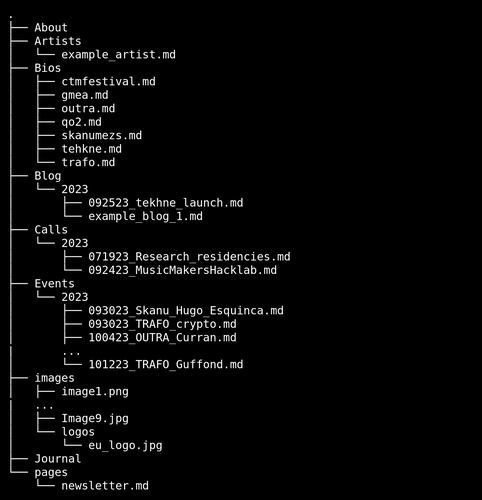
tekhne.website launch
The 6 tekhnē partners are honoured to welcome you to tekhne.website, an ever-expanding place for exploring the emancipatory potential of technology in music and sound art for the following 4 years. Since the website functions as an junction for everything tekhnē-related, and because building a website is pivotally related to what the collaboration is all about, we would like to spend some words on this.
The website was designed by OSP (Open Source Publishing), a Brussels-based group that questions the influence and affordance of digital tools through its practice of graphic design, pedagogy and applied research. They prefer to use exclusively free and open source softwares.
As a result, Nextcloud, a fully open-source, on-premises content collaboration platform, is used both as a workspace for the partners to work together on tekhnē, and simultaneously, also works as a CMS (Content Management System) to supplement the website. By making the editor's own desktops permeable with the website CMS it allow for new collaborative processes in a way that is as close as it can to raw files. It set a bridge between customized local edits in your own environment and online shared content, using tree-view files system as support architecture, and blur the edges between internal organisation and public sharing. In contrast to platforms as Google or Dropbox, Nextcloud allows the user control their data. This is how we chose to store the data on a server of Domaine Public, located in Belgium, not just in an unfamiliar, remote place. A proximity that somehow feels... comforting and soothing.
This personal and user-agency-driven approach is also reflected in the website design. The logo you see at the top of this page looks different for each user, because by using Scalable Vector Graphics filters, each browser generates the logo itself, resulting in an infinite number of versions of the tekhnē logo. SVG filters are made of combined primitives, similarly to modular synthetiser: each of the primitives apply a simple transformation to a web object (in this case a letter of tekhnē) and plugged together they can form complex effect. Most of the filters used here where not hand-coded but taken from Inkscape, a free and open-source software for vector graphic, and translated to the web. Additionally, one of the two fonts used on the website is the default system-ui font: an amorphous font that, depending on operating system, varies in outlook. The other font used is Amiamie, developed by the non-binary artist duo Mirat-Masson, under Open Font Licence.
From now on events, artists, research, a journal, and blog posts around the topic will be progressively featured by the six participating partners, each taking their own approach on the matter.